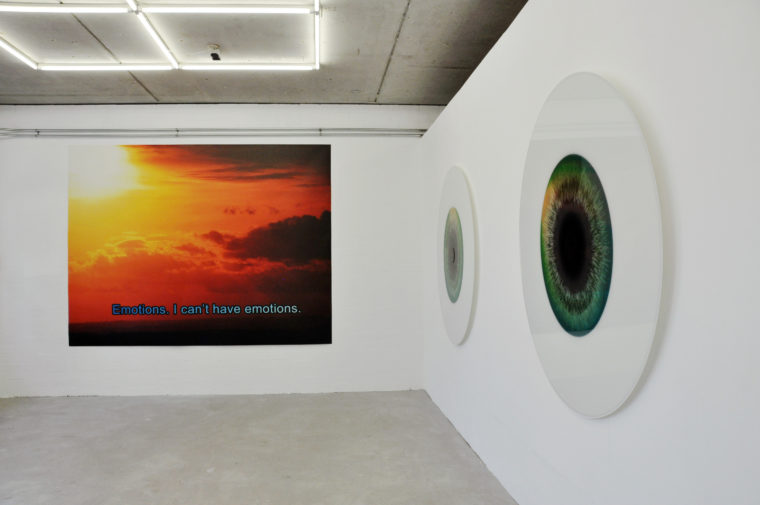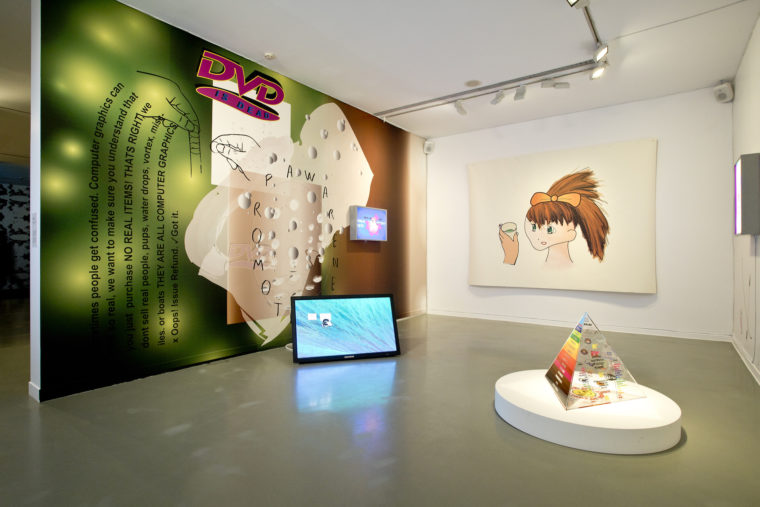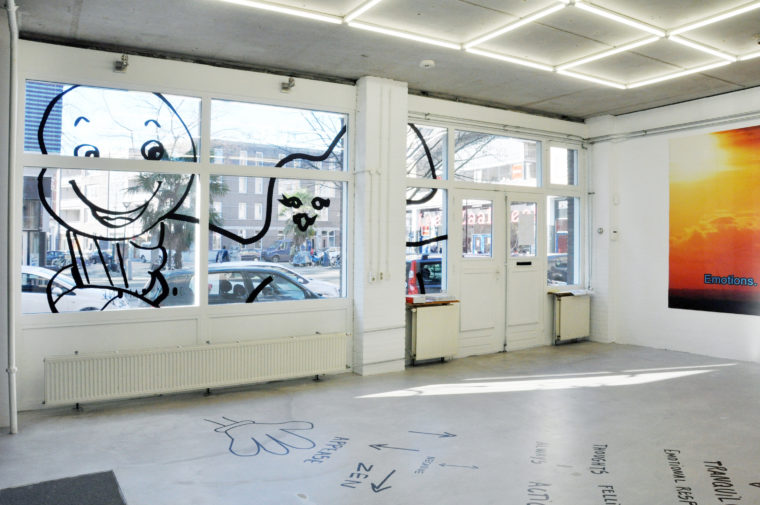Search
To search for an exact match, type the word or phrase you want in quotation marks.
A*DESK has been offering since 2002 contents about criticism and contemporary art. A*DESK has become consolidated thanks to all those who have believed in the project, all those who have followed us, debating, participating and collaborating. Many people have collaborated with A*DESK, and continue to do so. Their efforts, knowledge and belief in the project are what make it grow internationally. At A*DESK we have also generated work for over one hundred professionals in culture, from small collaborations with reviews and classes, to more prolonged and intense collaborations.
At A*DESK we believe in the need for free and universal access to culture and knowledge. We want to carry on being independent, remaining open to more ideas and opinions. If you believe in A*DESK, we need your backing to be able to continue. You can now participate in the project by supporting it. You can choose how much you want to contribute to the project.
You can decide how much you want to bring to the project.

In the work of the duet Momu & No Es (Eva Noguera and Lucía Moreno) through the video art, video performance, installations and sculptures, merge the absurd with a criticism to the scope drive and the hyperconnection in a time of cognitive capitalism and their new forms of setting-up subjectivities.
Under the apparent superficiality of the comical spark, in your pieces a troubling omen always makes its home: where has this interest to talk openly about this alienating and superstitious relation that we have with the digital world come from?
Our interest comes from the suspicion and genuine distrust towards the evolution of the use of the “new” reality technologies. Generationally we are observers who have seen and lived very radical changes in all aspects of our way to understand the environment and ourselves. Concepts like privacy, simultaneity, availability 24/7 or the streaming are elements and ways of life that have been reinterpreted and frenetically assimilated by everyone. In spite of being lost in this reality, we still remember a different world in which we did not live on-line.
How did your suspicion towards the power of the digital image start? Do you remember a key situation, of awakening, of curiosity? A moment, let’s say, significant?
At the beginning of the 2000, while I was in college, an exhibition “Archive Cultures”, commissioned by Nuria Enguita and Jorge Blasco, at Fundació Tàpies impressed me very much. It was then when I discovered the power of the digital image and how it would stir up the ways of seeing and being closer to reality (Lucía). In my case, it was when I discovered the Freehand (Eva).

View of the installation Be Careful My Sister (Joey Ramone Gallery, Rotterdam)
In your last exhibit Be Careful My Sister (Joey Ramone Gallery, Rotterdam, 2019) you go back to the language of the installation. Could you comment in what does it consist and which are the driving ideas of this exhibit?
Be Careful My Sister is a summarized version of the exhibit My advice to Eva, which is now shown in La Casa Encendida in Madrid. At the same time, this is the answer to a previous small piece made by Eva to Lucía, called My Advice to Lucy in which three key points for the millennial generation were shown: a wild ambition, because we live in a world where opportunities are for ambitious people, where the main slogan is “do not feel special, at this moment, you are special” and third “do not suffer for what others think about you because they are basically in the same situation”.
My Advice to Eva is a piece in which daily situations that lead everyone to frustration are described: a video expressing gratitude to eliminate an applicant in a recruitment process, a lady who needs to call her dog in her five minutes’ break, a pyramid of Maslow and a worm that sings to you that you are a loser. But there is a replica of this worm and repressive and paternalistic elements, a ghost who does not care about anything and that lives in this same world.

View of the installation at La Casa Encendida, 2019. Photography by Manuel Blanco
The exhibit is surrounded by information: there are texts, symbols and images that follow this dialogue. A coocon as a being of light, stoicism as a way of living, advertising memes, predictions about a future guided by artificial intelligence etc. Be Careful My Sister, continues this idea of fraternity in a world of fragmented time and narrations, and defends that as long as a you and a me exist there will be hope because there is an us.

View of the installation Be Careful My Sister (Joey Ramone Gallery, Rotterdam)
In your work you invite the spectator to immerse himself to simulations of the promises of happiness that Internet offers us, reinterpreting stereotypical and mentors of the global popular culture. As you work in Spain and Rotterdam and you have participated in exhibits and residences in other places of the world such as Japan or the United States, do you notice any difference in the receipt of your works in different cultural contexts?
Yes, we notice differences in the receipt of our work. Fortunately, we do not live in such a globalized world. For example, we notice differences even between Madrid and Barcelona where contexts are small. Where we really noticed a different receipt was in Japan. In spite of having worked in institutions and in collaboration with other Japanese artists, making contact was complicated, because although it may seem it, you do not share the same codes or artistic references and here is where you notice that we live in an Eurocentric world and that not all the artistic traditions have a same origin or orientation. When we were in Senegal, the contrast was much more impressive.
But beyond the local and transcultural contexts, there is a common ground in the stereotypical that we create. It is pretty universal because we always have the intention of reaching a general audience. Although the piece or project is not didactic or completely intelligible, we want for it to have a familiar appearance to the public, that includes popular culture and a bit of show and that this connexion is a gateway to the purpose.
In your work, the implementation of power of the images as builders of subjectivities reminds me to the power of the religious images of the Middle Age. If it is true that we now trust the algorithms like the ancient people anticipated the result of their battles in the entrails of the animals, do you agree on the idea that the postmodernity is a new Middle Age? Why?
I remember a day a long time ago, listening in the radio a broadcasting of ancient music, in a moment, the radio speaker asked I do not know if to a theorist or to an interpreter why we should listen to baroque music and this one answered: “to be prepared to go back to the Baroque period”. It was a serious national broadcasting. And, from then, I did not stop thinking about that. I agree on that perhaps we are at the door of a New Middle Age. Now, at a time of post-truth, it seems that we are socially going back to the non-rational mythic era, prephilosphic and prescientific. The communication of today, in spite of being written, it looks more like a written oral expression because it takes place in a culture of the interface where we are accomplices of our own trickery.
If it is true that the generations that grew surrounded by the Internet belong to what is called The Second Gutenberg Parenthesis, a time of an alphabetisation where digital communication promotes a new orality, do you think that a new alphabetisation would be necessary? Are there more emancipating alternatives to our current exemplar of on-line communication?
From my point of view an alphabetisation needed today, following the idea of the essay In the Beginning…Was the Command Line by Neal Stephenson (1999), would be the knowledge of the programing language. That is to say that since we are at a moment of technological acceleration, we should know the language that is hidden behind the GUI (Graphical user interface), more simplified and alienating each time that separate and disconnect us from the technology that is behind. And yes, there are more emancipating alternatives to our current exemplar of on-line communication. Yes, for sure! We still have body. And mind. We also believe that, as always, in technology there will be peaks in which our grandsons would be horrified because IPhone will be used on the table, as I get horrified for the fact that my grandparents threw the ashes of their cigarettes on the floor of the house.
Which are your models and sources of inspiration theoretical and artistic?
There are a lot of literary models in our work, but besides the literature in general as a source of inspiration artists such as Antonio Ortega, Fischli & Weiss, Daniel Rehn, Carles Congost, Yuichiro Jose Tamura, Shana Moulton, Michel Pornoy, Jon Rafman, Lauren Prouvost, Erina Matsui, Camille Henrot, Hito Steyerl, Ryan Trecartin. And on the theoretical level, we are interested in people and groups such as Tiqqun, Donna Haraway, Timothy Morton, Geert Lovink, Florian Cramer, Sarah Sharma, Rosi Braidotti, Chus Martínez, Saito Tamaki, Josep Maria Esquirol, Ursula K. Le Guin among many others.
What are you working in now? And which are your future projects?
A new musical.
(Highlighted image from the exhibition Be Careful My Sister, Joey Ramone Gallery, Rotterdam)

Ana is fascinated to dive into books and movies, to approach with caution those tentacles that lie in the depths and to return to count what she has seen. She has published “Este es el momento exacto en que el tiempo empieza a correr” (Premio Antonio Colinas de Poesía Joven), the novels “La puerta del cielo” and “Hemoderivadas”, “Constelaciones familiares” (short stories, Premio Celsius Semana Negra de Gijón) and “Érase otra vez. Contemporary fairy tales” (essays). She currently lives and works between Berlin and El Paso, Texas, where she is a Bilingual MFA Fellow in Creative Writing at UTEP. Some of her texts have been translated into Portuguese, Italian, Polish, Lithuanian, German and English.
"A desk is a dangerous place from which to watch the world" (John Le Carré)